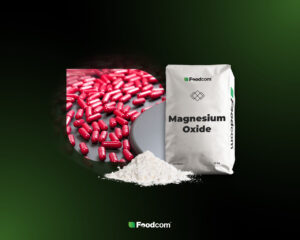Although we are undoubtedly in the middle of winter (warm greetings from Europe, if you will allow us the joke), the market for plant-based raw materials is just now waking up, especially in terms of varieties used for feed. More and more is happening, so it is undoubtedly worth keeping an eye on developments. Read on, and you’ll be up to date on everything you need to know, as always.
The last few weeks have been marked by truly wintry weather in Europe. The low temperatures have definitely put a damper on the good mood, but experts believe that they should not have a negative impact on the upcoming harvest. At the same time, Argentina is struggling with the worst drought in decades, and more and more countries and companies are working on solutions to minimize the impact of all the difficulties that 2022 has brought.
Well, that’s right, 2022 – what a year that was! This is our last ‘meeting’ in 2022, so we wish you all the best. Rest well in the coming days, because a lot will happen in the next year. See you in 2023!
Natural Sweeteners
The general market situation is dominated by the search for cheaper alternatives, obviously triggered by high raw material prices. However, this does not apply to all manufacturers using natural sweeteners, because in some cases it is necessary to use raw materials from a specific country or region. When switching to alternatives of different origin than usual, special attention should be paid to the composition and heavy metal content.
In the case of Dextrose, the price stabilizes and remains high. Historically, the raw material has now reached one of its highest prices. There is no reason to believe that this trend will change in the near future. Some of the leading producers are sold out for H1 2023 or even for the entire year, especially those manufacturing a corn-based product. We predict that all glucose syrups will increase from next year. Fructose, like Dextrose, is stabilizing at a high level. The price of Maltodextrin, on the other hand, has been rising recently. The low-sugar variety is most in demand.
Native Starches
The market for Native Starches is stable. Native Potato Starch is both one of the most expensive and one of the most sought after. Demand remains strong while available quantities are low. This is due, as we mentioned earlier, to the unsatisfactory potato harvest this year. The current trend will therefore certainly continue until the next harvest. The price of Native Corn Starch also remains at a high level. Current forecasts indicate that the price will rise even further in the new year and may even exceed the price of Native Potato Starch. Demand for Native Starches with similar properties to Modified Starches is increasing because their use does not require the E symbol on the label.
Modified Starches
The demand for Modified Starches is high. Many customers who have been using Modified Corn Starch are considering switching to an alternative starch made from tapioca, but not everyone can afford to change the product formulation. The greatest demand is for Modified Corn and Potato Starches, particularly cold water soluble varieties. This trend is a result of high energy prices. There is no doubt that demand for Modified Starches will remain high due to their widespread use as stabilizers and thickeners, including in convenience foods.
Proteins
As for Vital Wheat Gluten, most producers are currently out of stock, and some are already contracting quantities for next year. Prices in these contracts are higher than Q4 2022 prices. There is a slow movement in the feed grade market, whose price is lower than the food grade price. Vital Wheat Gluten, which is used for food, will continue to be in high demand, even if prices increase significantly, as there is no good alternative to this raw material. The situation of Corn Gluten Meal is stable, demand is emerging, and the feed market for this product is expected to ‘wake up.’ Meanwhile, the market for Potato Protein has awakened, there are more and more inquiries from feed manufacturers, and everyone expects the price to rise quickly.
What else?
Europe
Good news for winter cereal crops in Europe
Although recent days in many parts of Europe have been more ‘wintry’ than in past years, analysts say this will not negatively impact the upcoming harvest. In France, the European Union’s largest cereal producer, sub-zero temperatures have not been low enough to pose a threat to wheat, barley and rapeseed, and the steady drop in temperatures since last month has given crops time to adjust to the weather.
In Germany, temperatures reaching minus 14 degrees Celsius in central and eastern areas this week could prove dangerous for barley
This crop is much less cold-tolerant than wheat and rapeseed. Analysts believe that wheat and rapeseed should be fine, while it is too early to assess the impact of winter conditions on barley.
Extremely low temperatures have also been measured in Poland recently
Again, experts stress that it is too early to estimate crop losses that may have been caused by the prolonged frost. However, it appears that adequate snow cover in the eastern, southern and central parts of the country and the temperature increase predicted for the next few days, which will limit the risk of frost for crops without snow protection in the west and north, will provide satisfactory results. In any case, Brrrr!
The Americas
Argentina is currently experiencing its worst drought in decades
Continued extremely harsh weather conditions are hurting livestock and seriously threatening wheat, corn and soybean crops. The bad news (as if there was not enough on this topic already) is that meteorologists predict the situation will continue for weeks, with less rainfall than average for this time of year.
Global seed company Syngenta has announced that it will launch a new wheat variety in the United States next year that has been developed using complex cross-breeding techniques
Similar efforts are being made by rival companies to develop a higher-yielding wheat at a time of dwindling global grain supplies. They have been inspired (is that even a good word?) by the difficult conditions that have affected crop size and quality this year, as well as the war in Ukraine, which has caused significant supply chain disruptions.
Meat consumption in Brazil has declined significantly in the last 12 months
The reason, of course, is rising food prices (and a growing awareness of healthy eating). What is unusual about this issue is that Brazil is (or soon was?) the world’s largest exporter of beef and chicken. Even more interesting is that, according to a recent survey, 90% of Brazilians have no plans to return to their former, heavily carnivorous habits.
Asia & Oceania
Indian feed manufacturers and poultry farmers are calling for a ban on corn exports
High corn prices in India are prompting the market to export, but the domestic poultry and feed industries want the grain to remain in the country as a feed ingredient. The Indian government is said to be considering a legal ban on the export of domestic corn, but such a solution seems unlikely because corn is not considered a primary commodity in India. The solution to this problem is definitely not a can of corn.
Australia is likely to start the new year with a record wheat crop, dominating near-term demand in Asia
Supplies from Argentina and Ukraine remain uncertain. However, logistical challenges and wheat quality concerns could threaten Australian exports. And the record will not be small – the crop could be the largest ever.
Experts point out that the Malaysian palm oil industry must be ready to embrace new technological changes
This is especially important in difficult times. There is no doubt that it will be beneficial to use artificial intelligence and the Internet of Things, such as digitization and automation technologies, to improve the current production process. The future is now (still).







